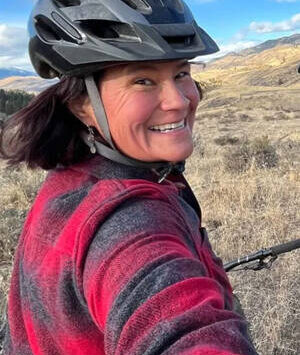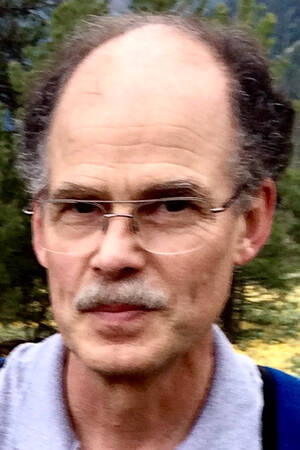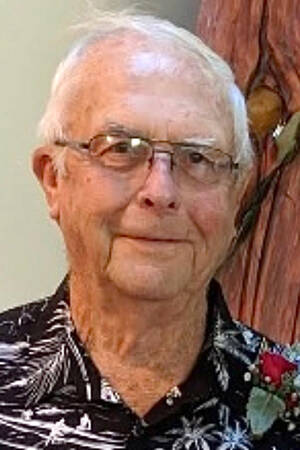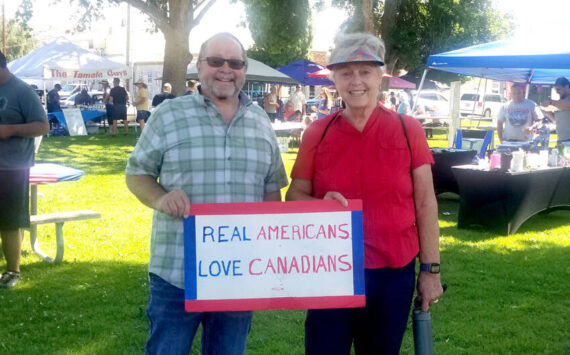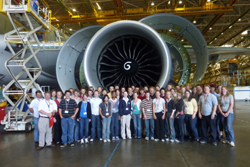
The group of students and advisors who participated in the Washington Aerospace Program in Seattle gathered together in the Museum of Flight. Tonasket senior Peter Williams in the in the middle row, third from the left. Submitted photos
SEATTLE – Tonasket High School senior Peter Williams attended the Washington Aerospace Program (WAS) during the week of July 18 to July 24, where he was the only student representing Eastern Washington.
“I’d say the trip was really, really neat,” Williams said of the week-long program. “I liked the field trips best and I got to meet a lot of interesting people. I was the only one from Eastern Washington and most people were from around the Seattle Area.”
Williams said although he missed home while he was in Seattle, it was a nice change for him to go from cherry harvest season to the engineering workshop.
“We got to go on a whole bunch of field trips: to the Boeing-Everett Facility, which is the largest by volume in the world, we went to Aerojet, which is where some space shuttle engines are built, and we did most of our work at the Air and Space Museum,” Williams said.
Williams was accepted into the WAS program at the end of last school year after completing a series of tests. While in the program, he and the rest of the students were split into groups each with their own scheduled task. Williams’ group’s task was to design the rocket the group would theoretically use for a mission to Mars while three other groups planned how people would work on Mars, planned how people would live on Mars and did overall management of the project.
“We learned it costs a lot of money to blast stuff up to space and how long it would take to get to Mars,” Williams said. “We learned more technology needs to be developed before landing and working on Mars is feasible.”
The largest challenge of the program, Williams said, was communicating between groups because every time one of the groups would need something new on the rocket, he and his group would have to go back and redesign the spacecraft. He said he’s hoping to become a pilot and to have a degree in engineering and that this program will help him in the future with those goals.
“This course taught different engineering aspects,” he said. “I know I’ll use some of the experience I gained in the future. We learned about engineering challenges, such as working with timelines and schedules, and I developed different people skills and worked on working in a group.”
Williams said the experience of one week in this program was definitely worth going through the tests he had to complete to be accepted.
“One thing about this program is that any interested juniors should talk to me because it’s kind of hard to get into,” he said. “They’ll start announcing the applications in about November.”
The program is open only to current juniors each school year.
